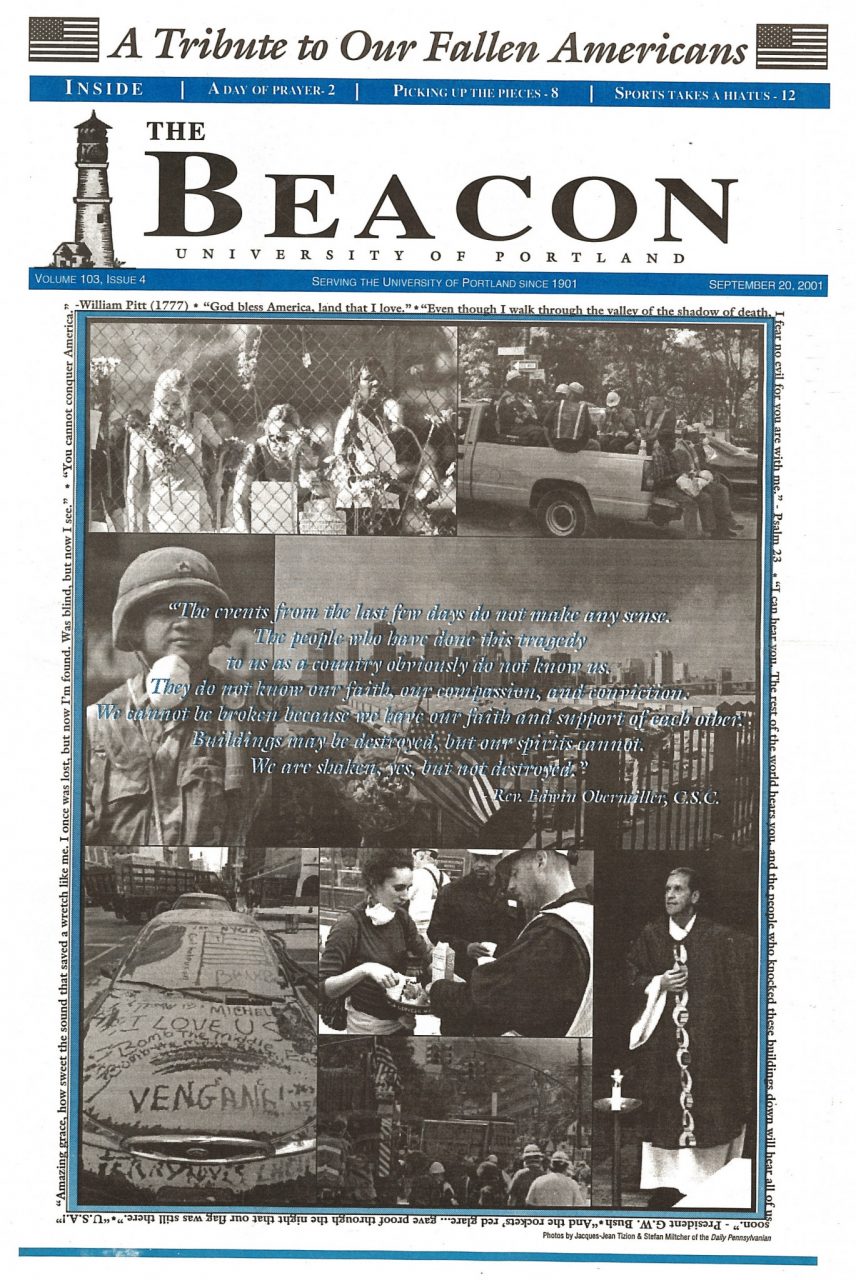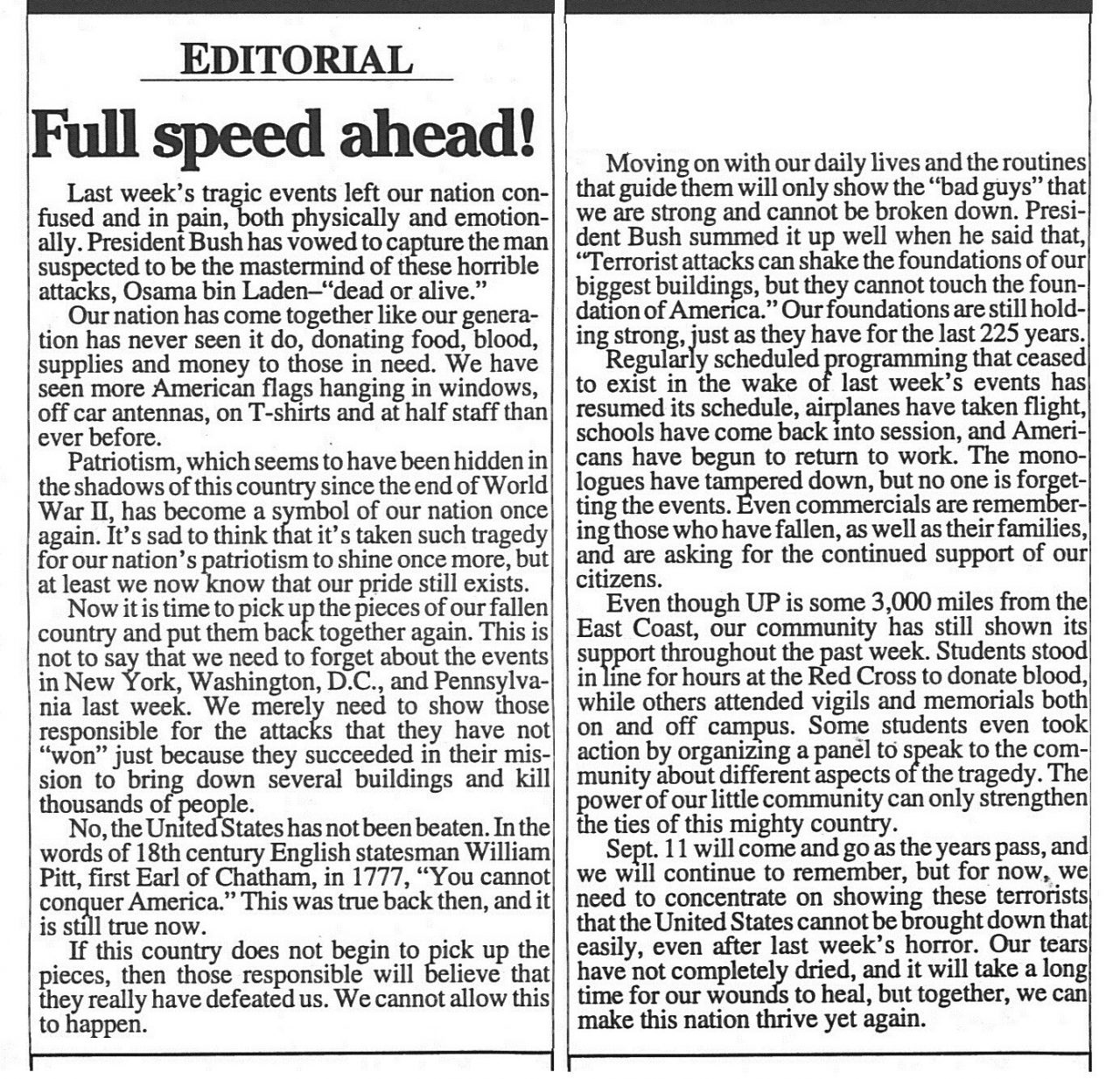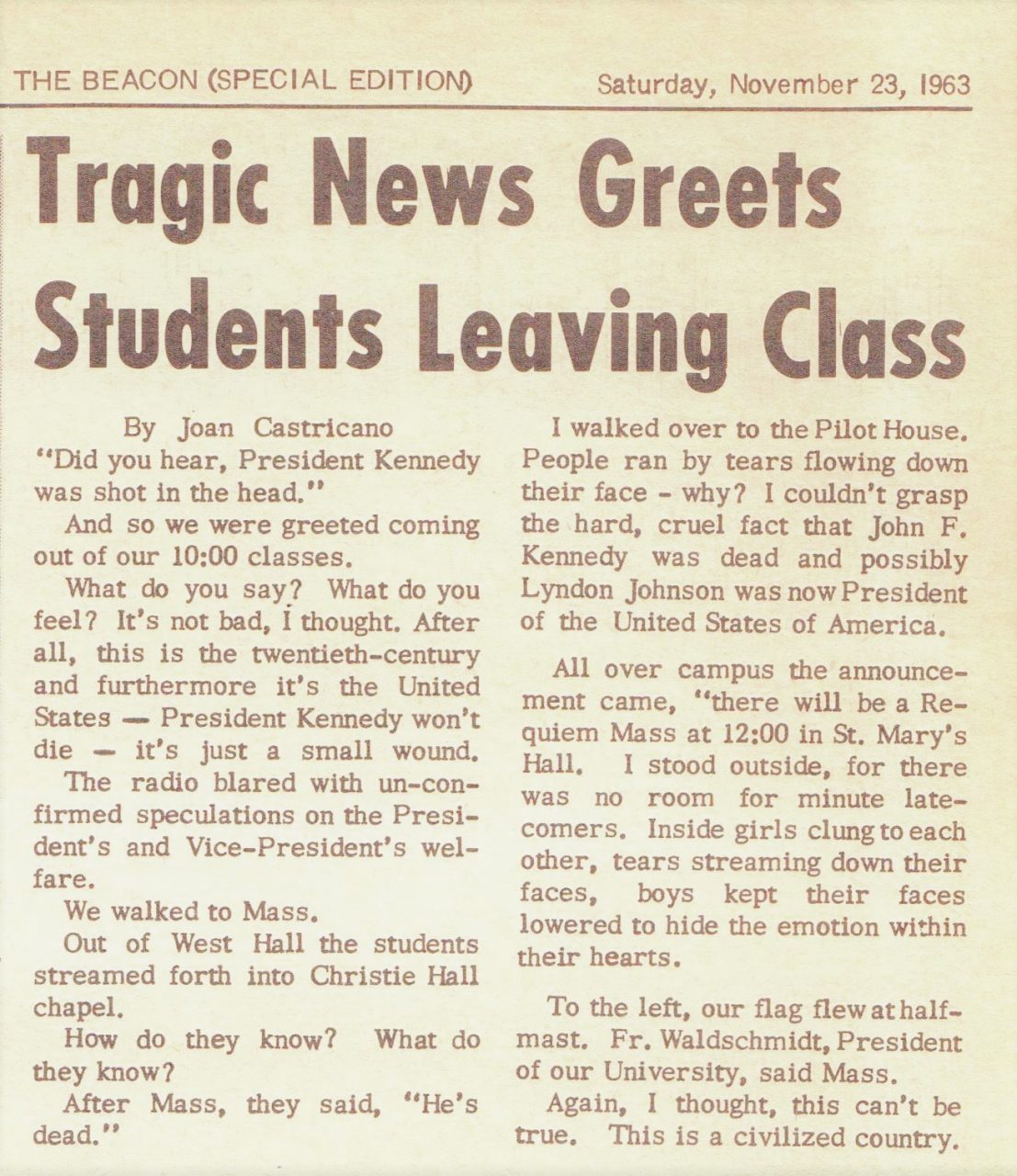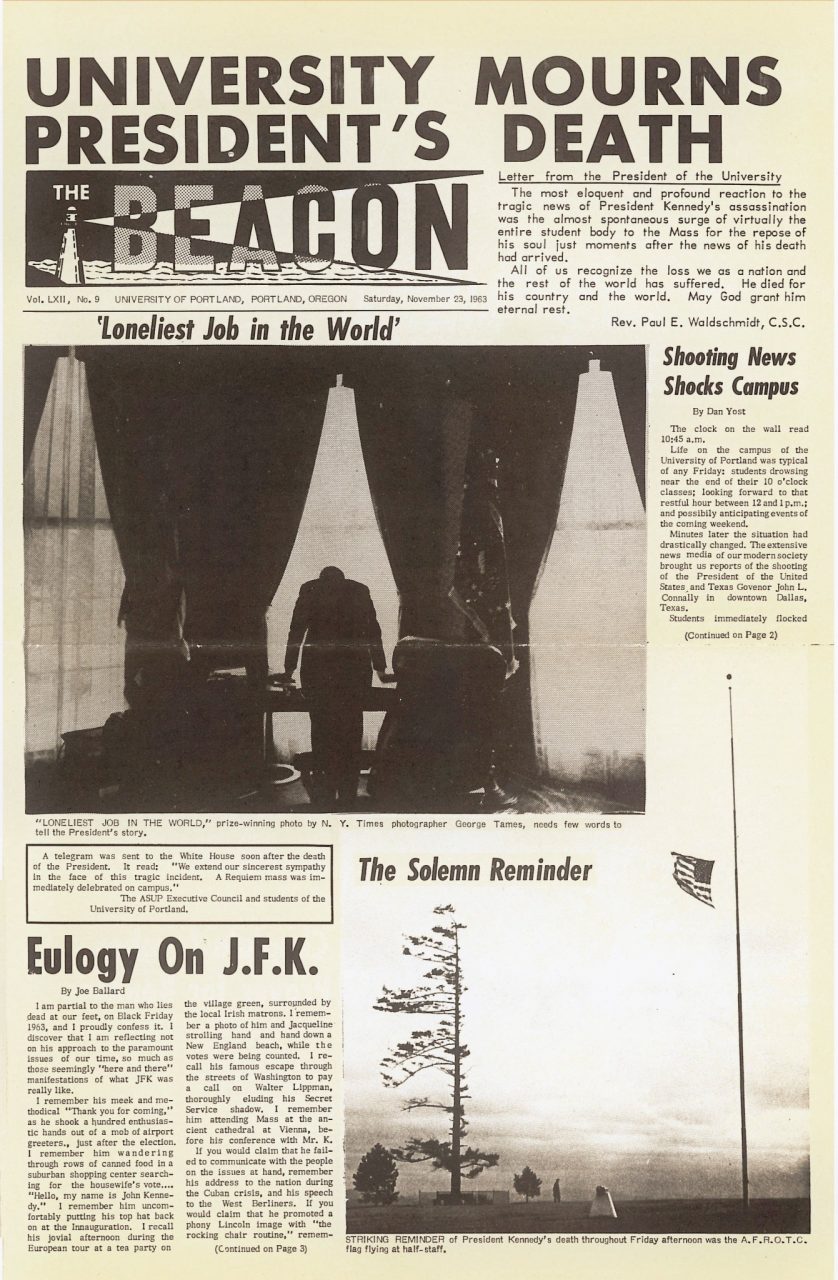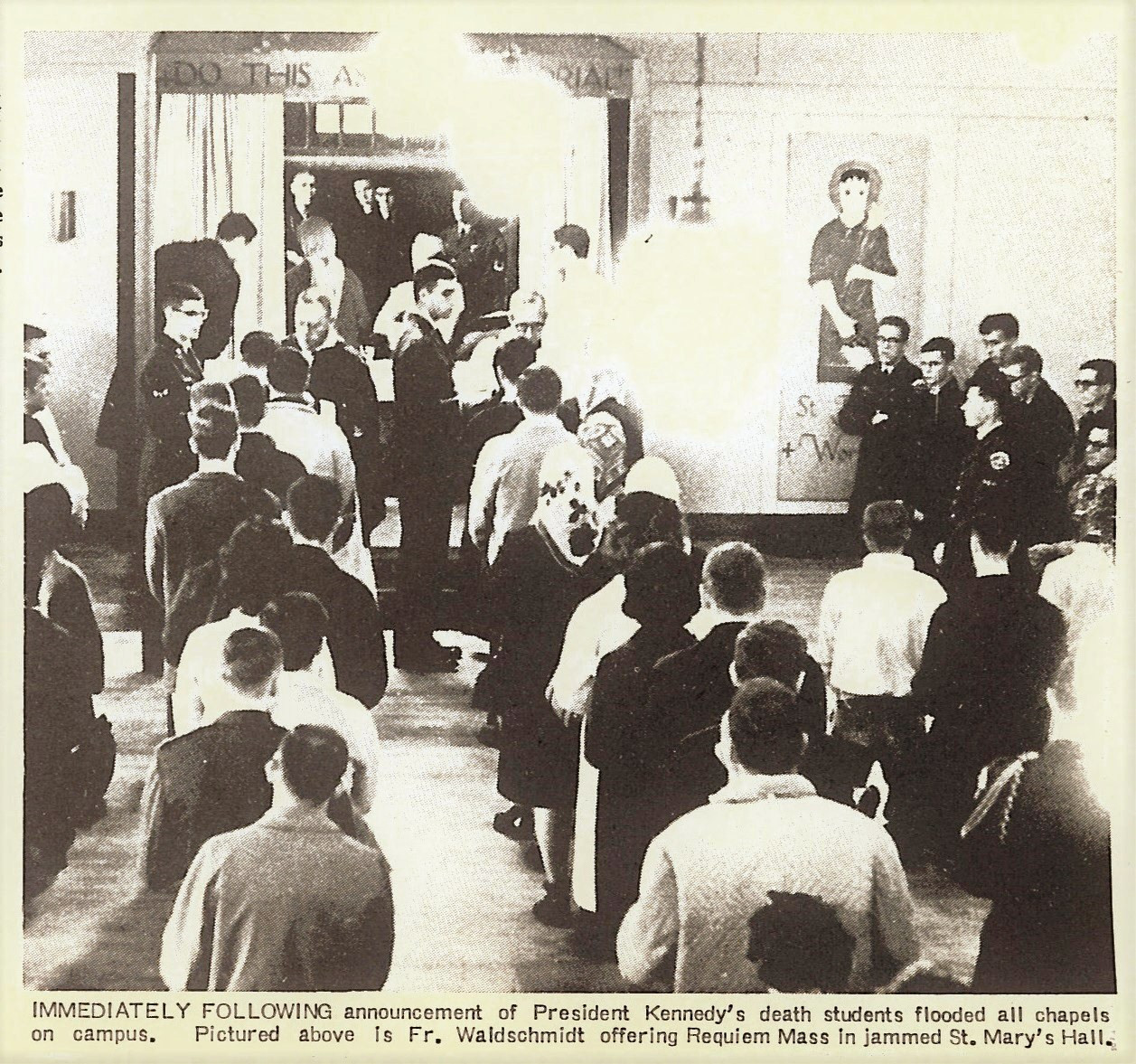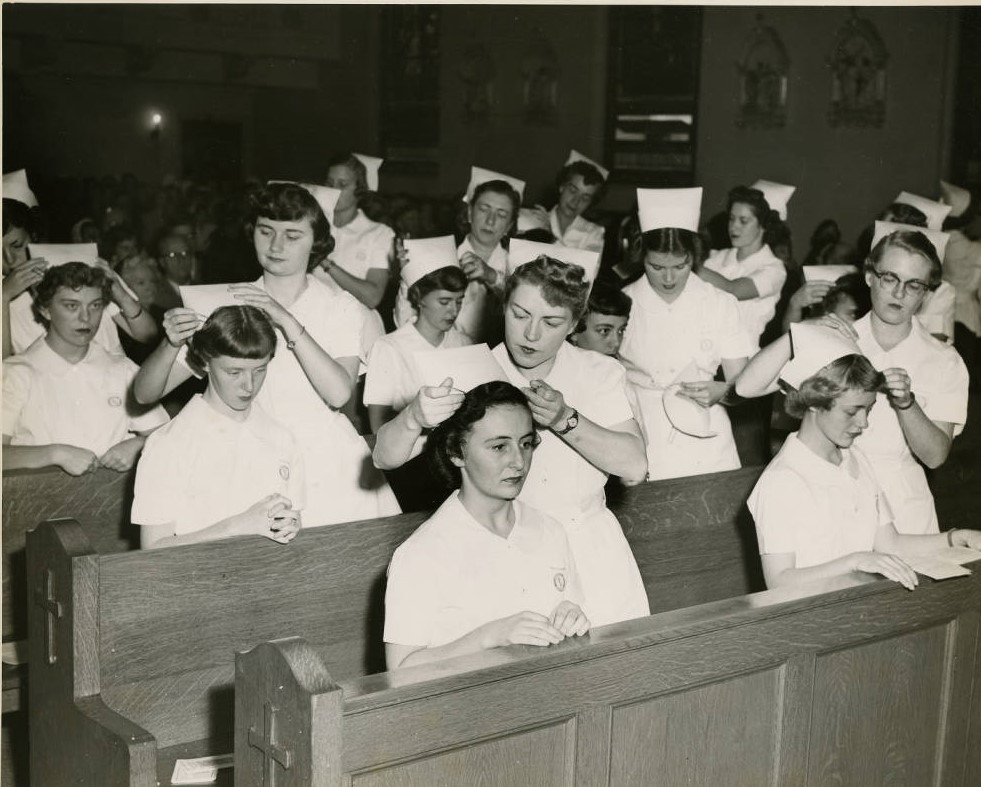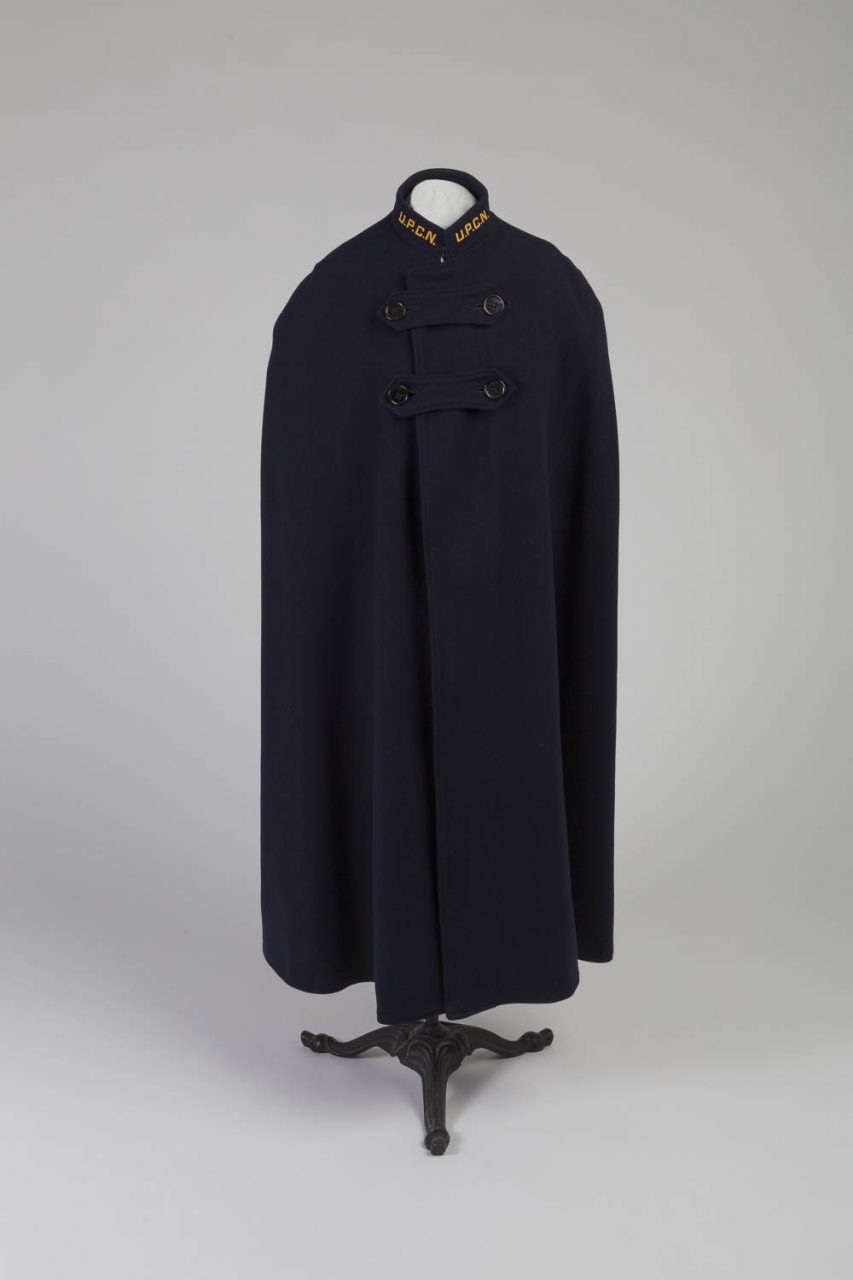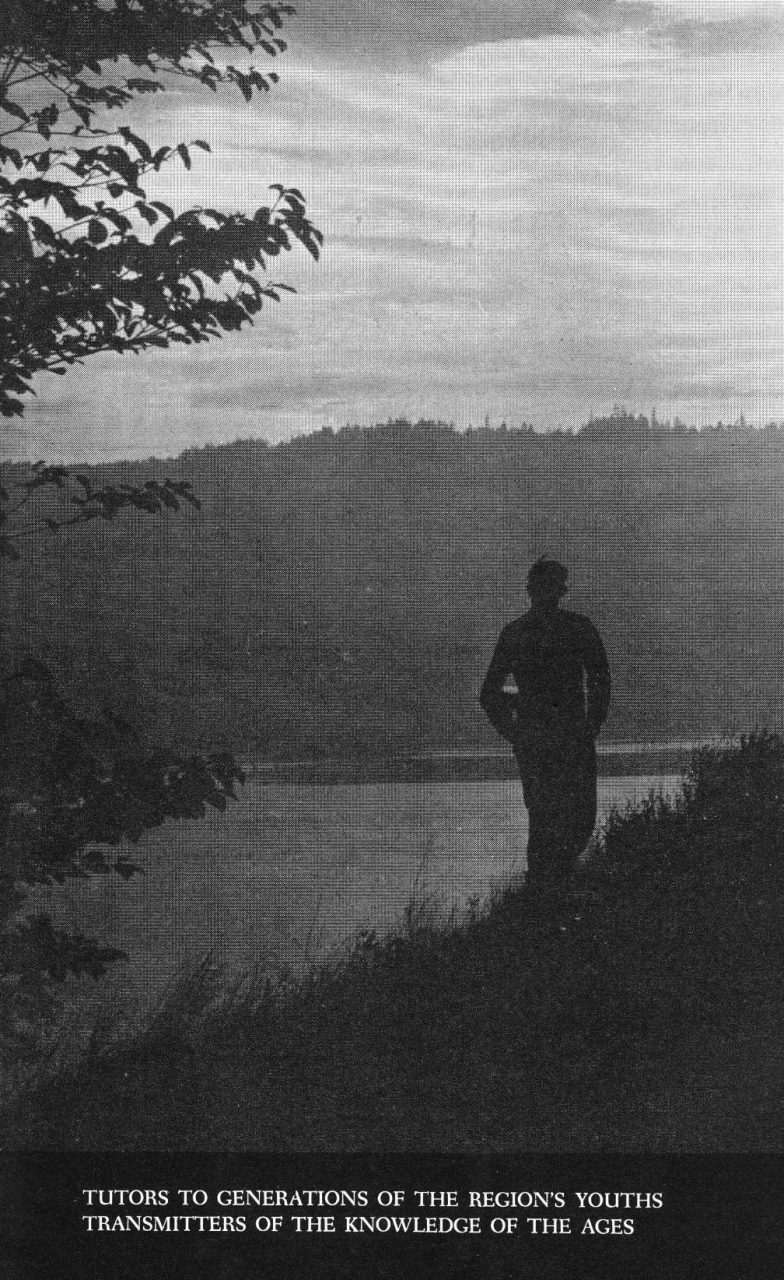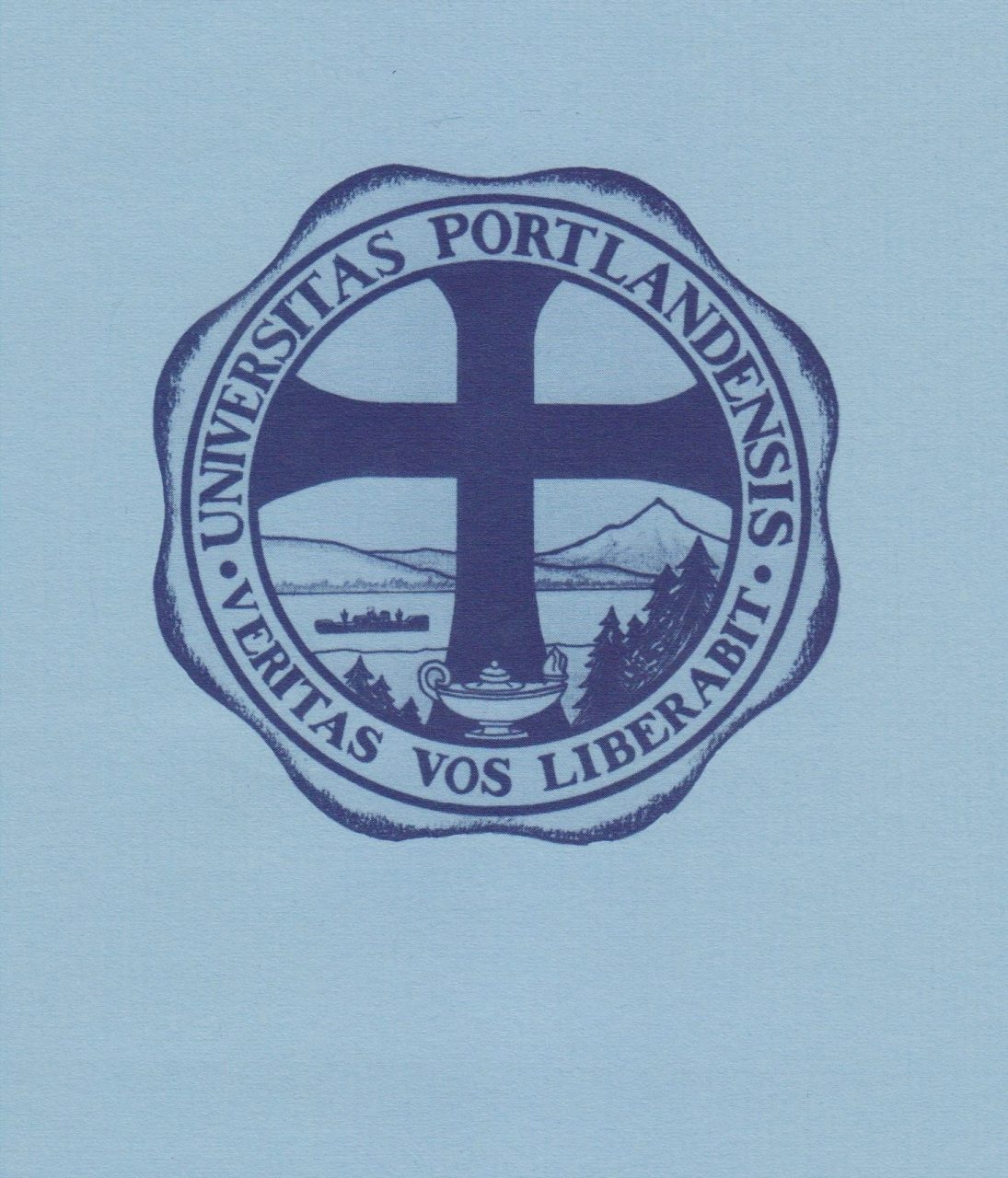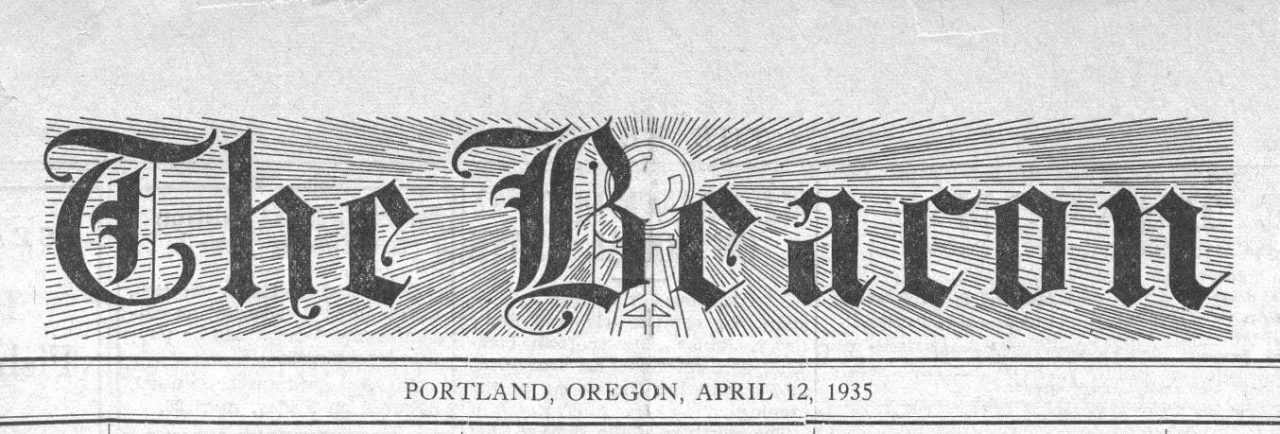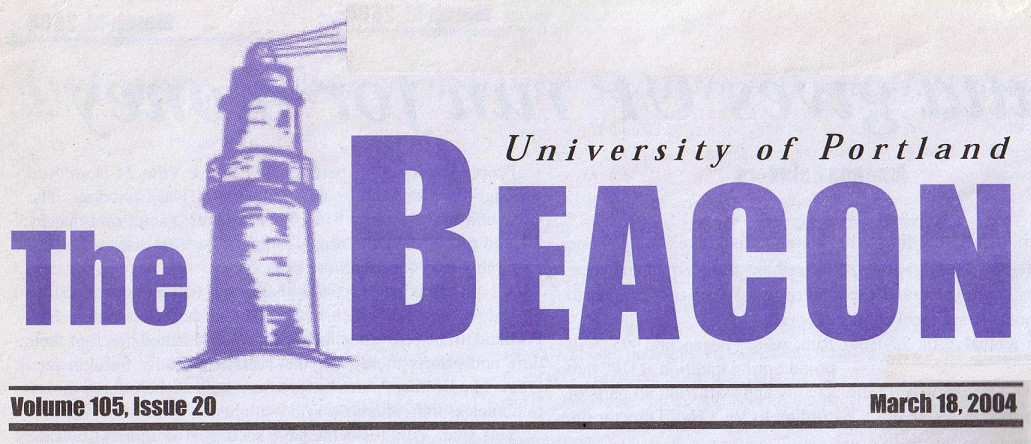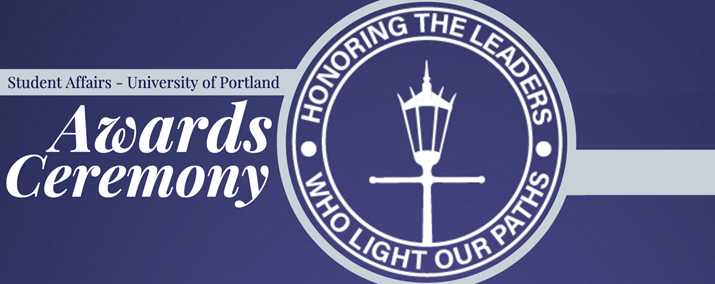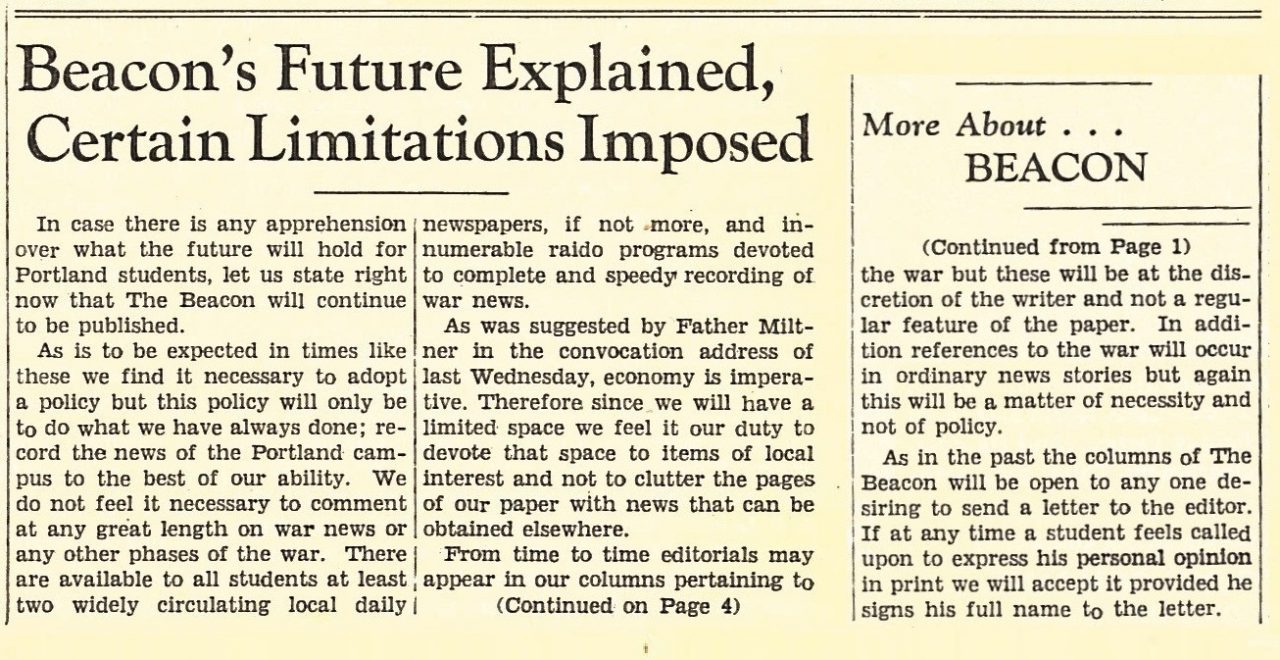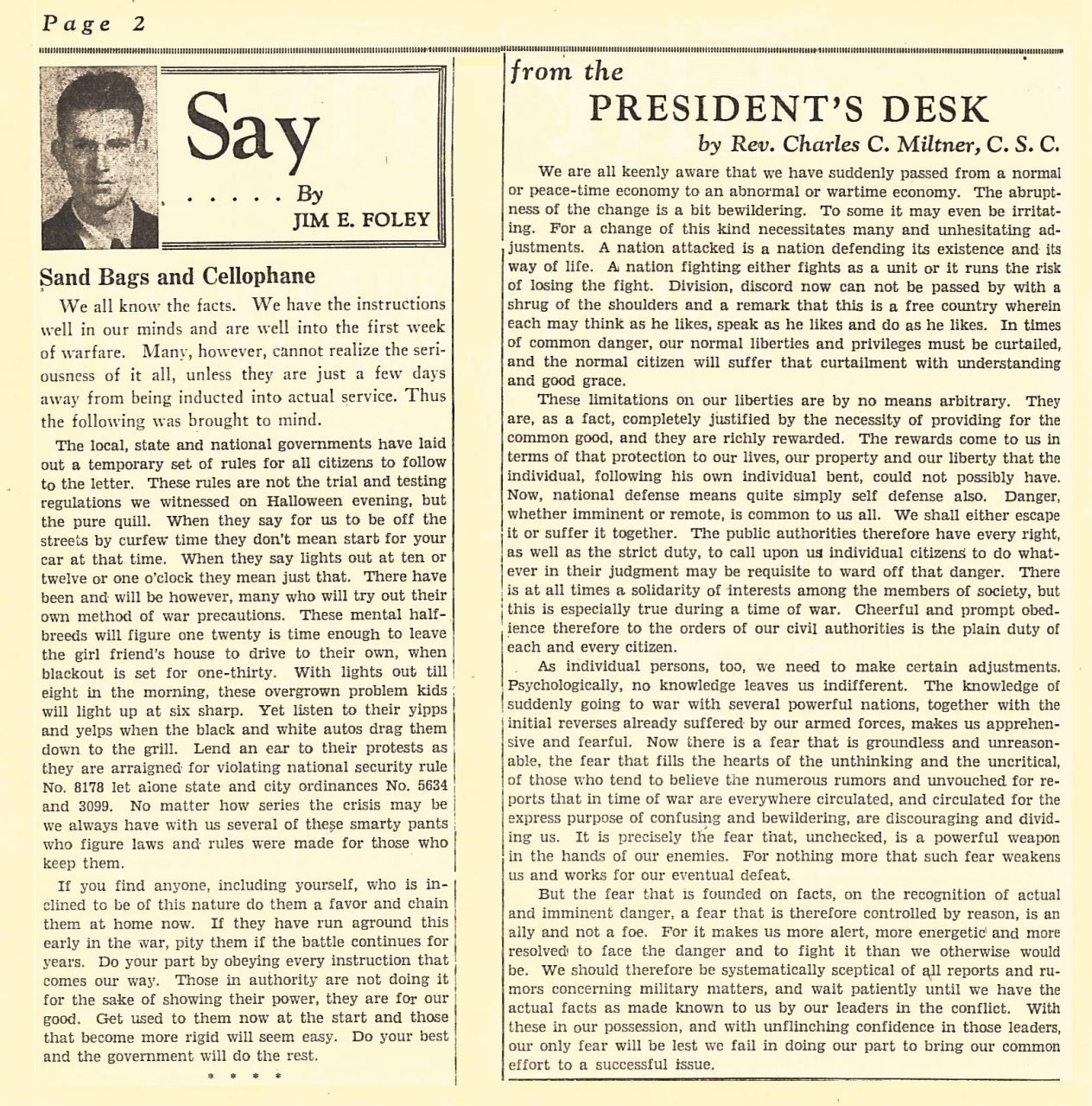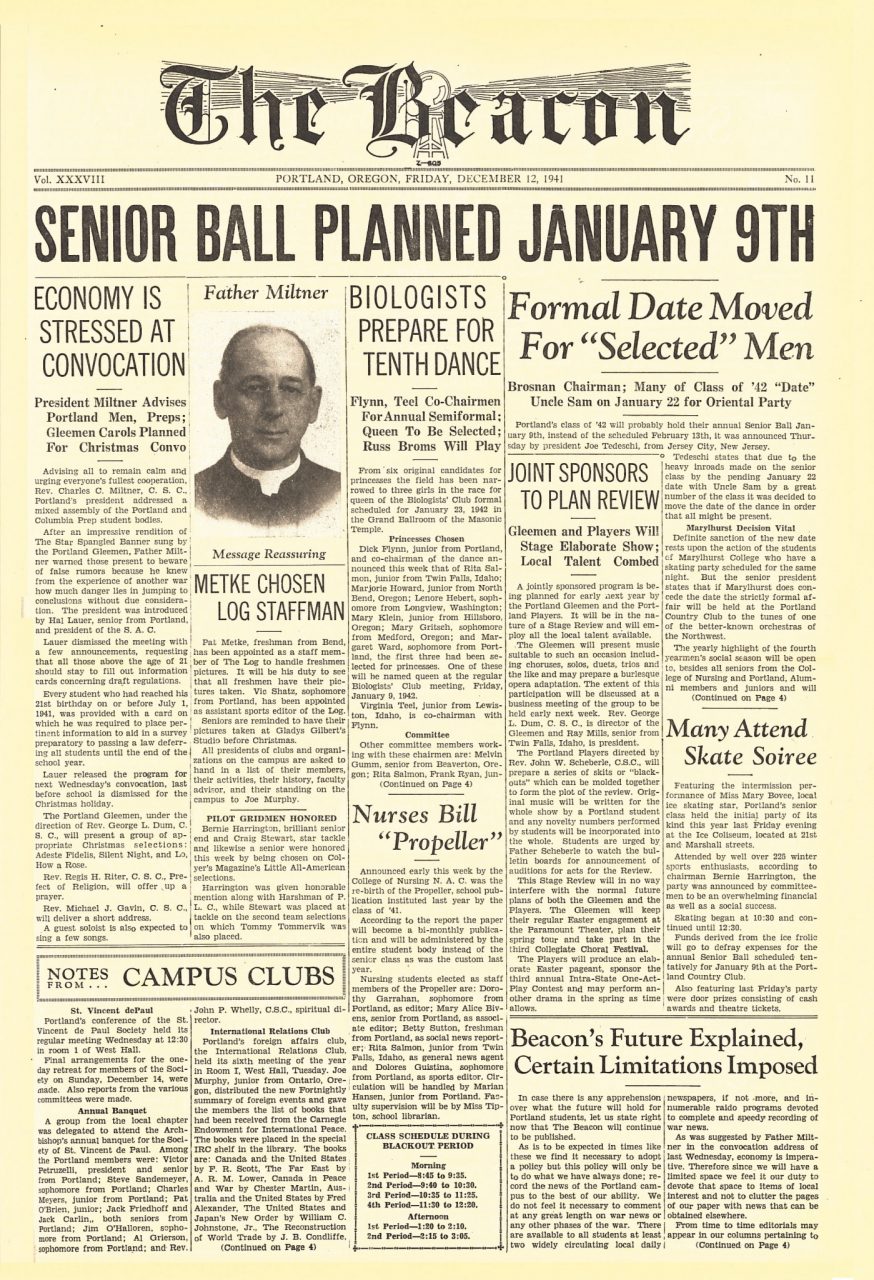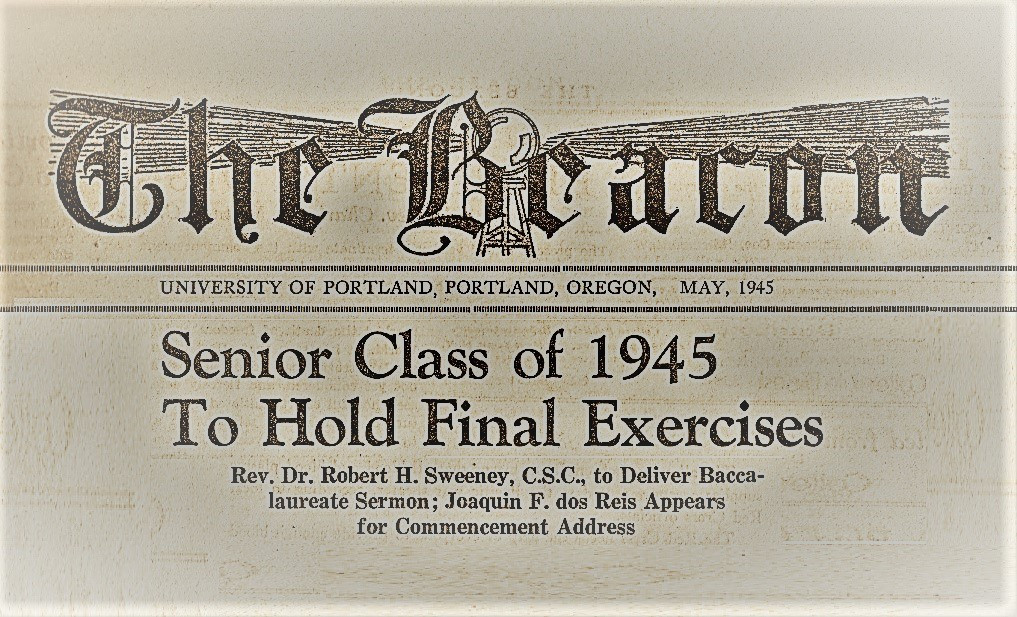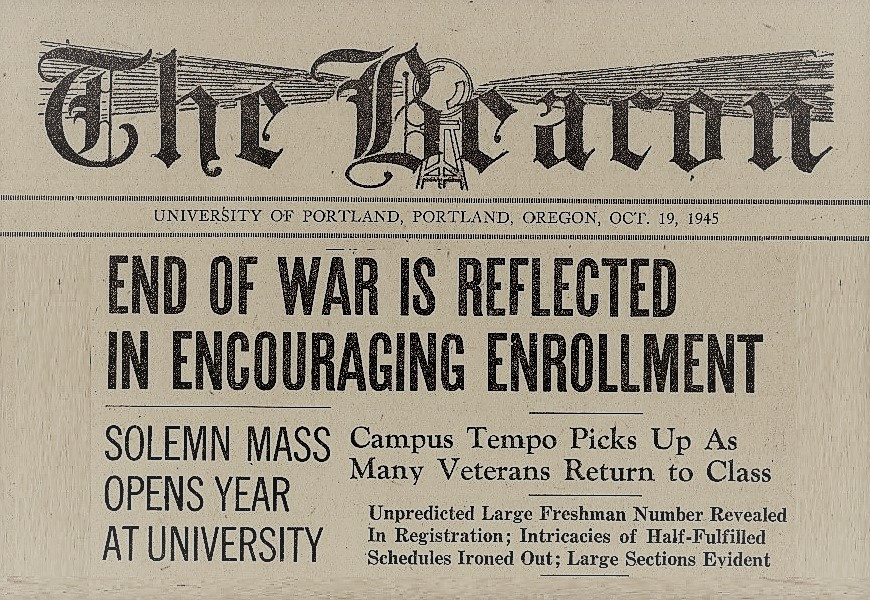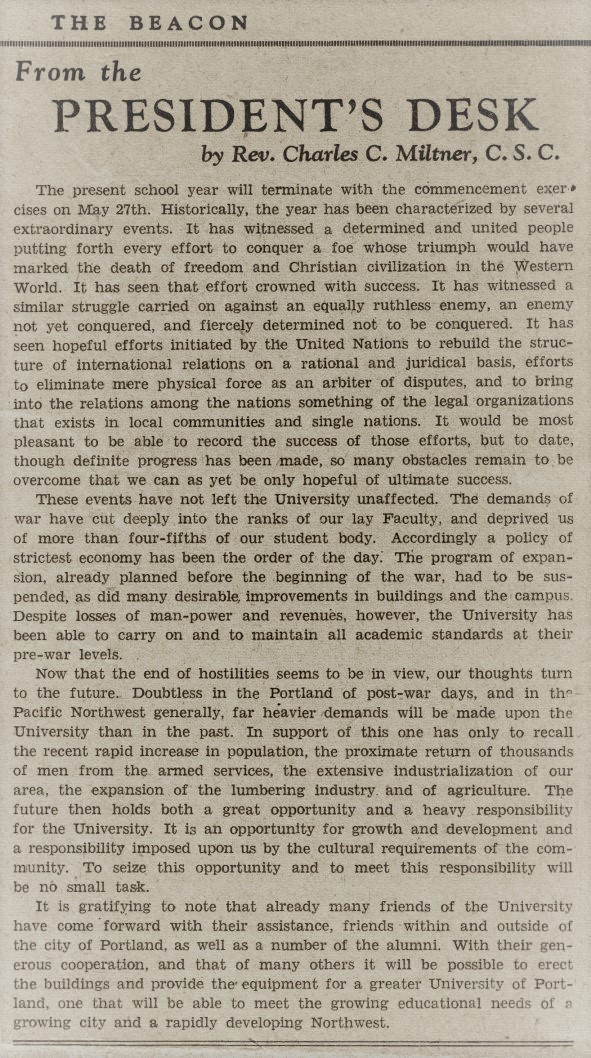Employing once more the same format for this The Beacon series, here is the campus response to the disruptions and sorrows of September 11, 2001; another day that tested American society and the strength of our community bonds. First, the editorial statement. The front page is reproduced at the bottom.
The text surrounding the front-page poster-montage reads:
(from top left-corner) William Pitt (1777) * “God bless America, land the I love.” * “Even though I walk through the valley of the shadow of death, I fear no evil for you are with me.” Psalm 23 * “I can hear you. The rest of the world hears you, and the people who knocked these buildings down will hear all of us soon.” – President G. W. Bush * “And the rockets red flare . . . . gave proof through the night that our flag was still there” * “U.S.A.!” “Amazing grace, how sweet the sound that saved a wretch like me. I once was lost, but now I’m found. Was blind, but now I see.” * “You cannot conquer America.”
The text superimposed on the photo-montage is a quotation from Fr. Obermiller, the then Director of Campus Ministry (pictured at lower right)
“The Events from the last few days do not make any sense.
The people who have done this tragedy
to us as a country obviously do not know us.
They do not know our faith, our compassion, and conviction.
We cannot be broken because we have our faith and support of each other.
Buildings may be destroyed, but our spirits cannot.
We are shaken, yes, but not destroyed.”
–Rev. Edwin Obermiller, C.S.C.
